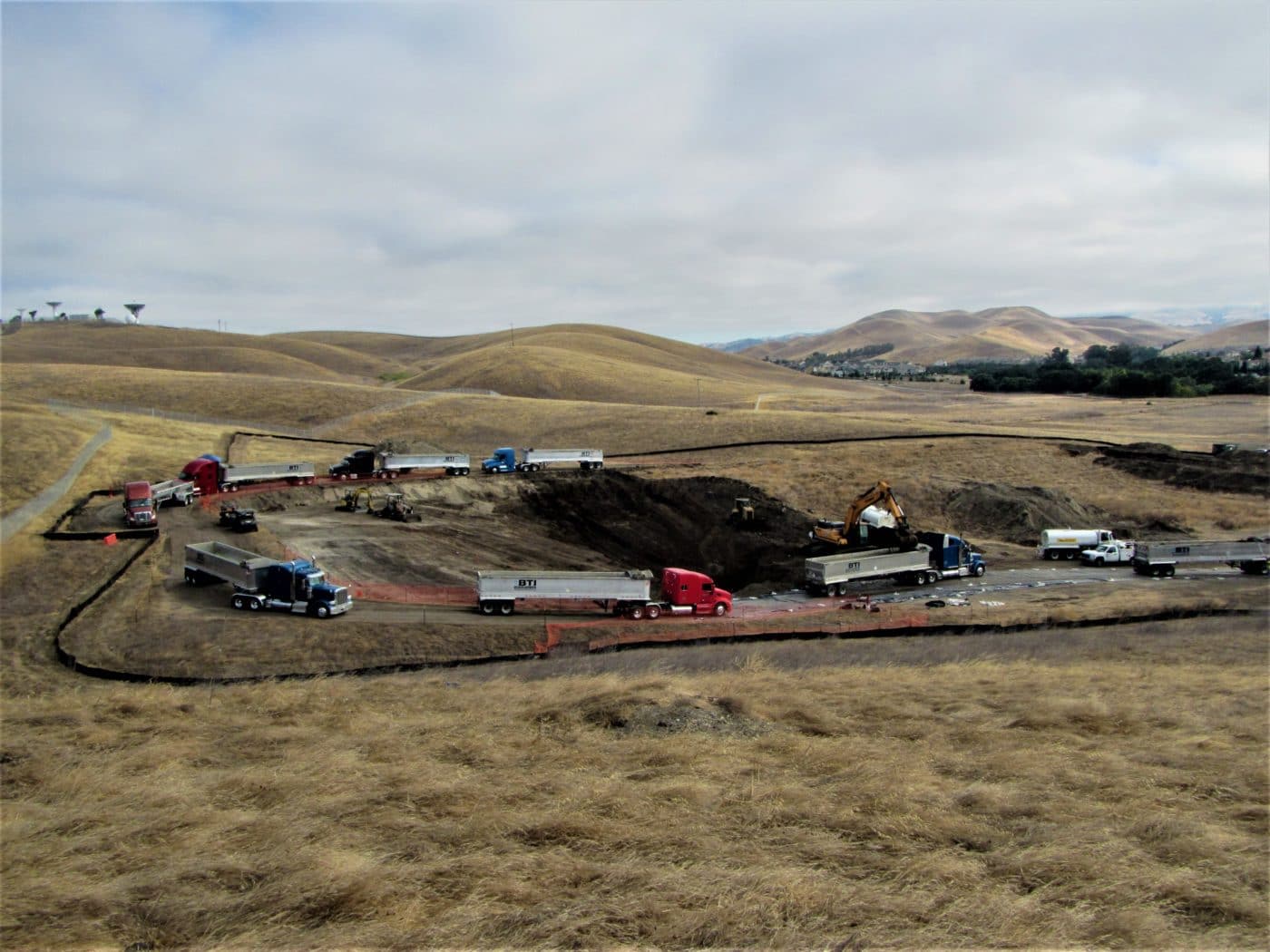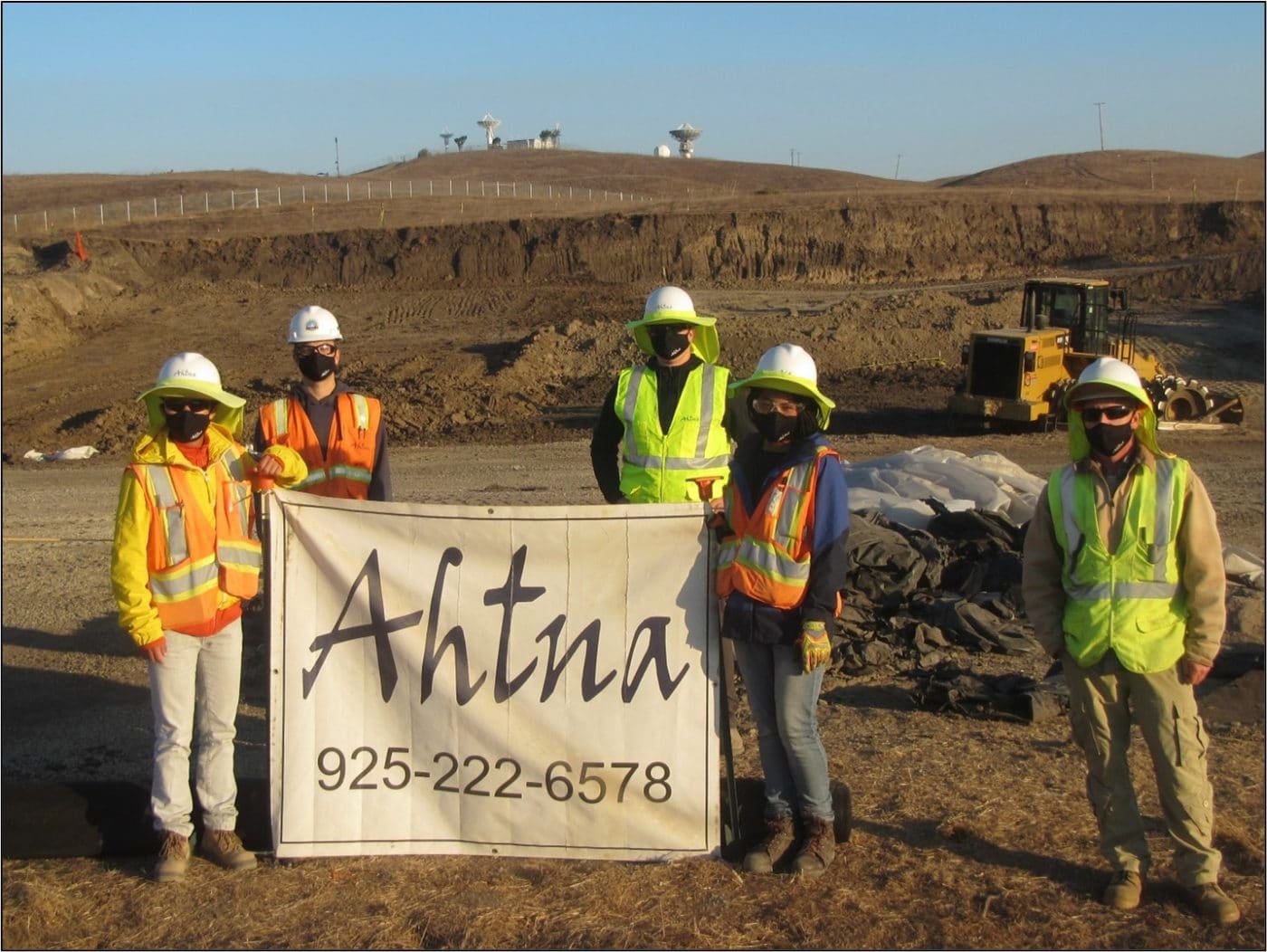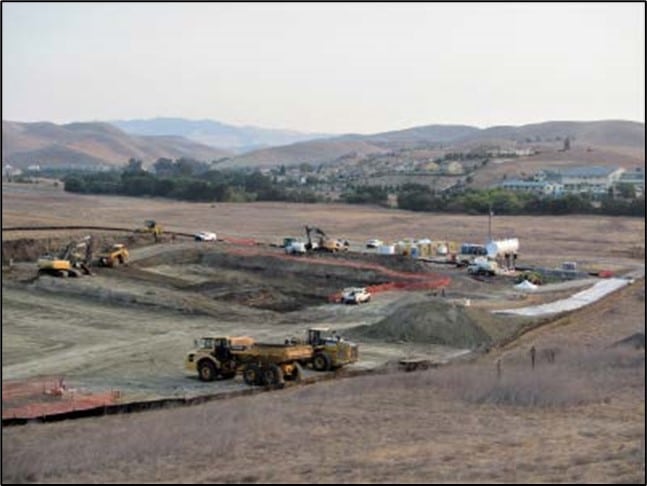
Submitted by Bruce Wilcer and Chuck Holman, Ahtna Environmental SWE
In Fall 2020, the Ahtna Southwest Environmental Division (SWE) team in the California Bay Area successfully completed a Non-Time Critical Removal Action (NTCRA) cleanup at a five-acre site containing three former WWII-era burn pits at Parks Reserve Forces Training Area (Camp Parks), Dublin, California. Camp Parks, which occupies nearly 2,500 acres, has served various purposes over the years; its current mission is as a mobilization and training center for U.S. Army Reserve personnel. The U.S. Army Corps of Engineers (USACE) South Pacific Division, through their decades-long relationship with Ahtna, has come to depend on the SWE California team to provide solid planning, site investigation, regulatory support, design, and remediation construction services to get cleanup projects to the finish line and site closeout.

The NTCRA response at Camp Parks, completed for the USACE Los Angeles District, was implemented after several years of preparation, negotiation, and challenges. Persistent efforts by Ahtna and collaboration with USACE to overcome those hurdles included implementing additional characterization after completion of the remedial investigation to refine the excavation design; protection of sensitive biological species (e.g., California tiger salamander/red-legged frog); clarifying cleanup goals relative to future land use; and designing an alternate offsite disposal haul route through the installation’s ranges and active cantonment area after the exit route immediately adjacent to the site became unavailable.

As mobilization began in June 2020 and the global coronavirus pandemic and restrictions intensified, the SWE team acted quickly to design and rapidly implement COVID-specific field safety Standard Operating Procedures (SOPs), intensive social distance monitoring and sanitation maintenance, and real-time updates to coincide with Ahtna, federal, state, and county health guidelines. AEI Construction Site Manager Sommer Carter and her team (Connor Dunn, Steve Korbay, Junjian Pu, Ava Pridgeon, Allison Roush, Jessica Feduck, and Kristin Guthrie), completed the multi-depth precision removal action on time, under budget, and with zero safety incidents. Sixty truckloads left the Camp Parks site daily to successfully dispose of more than 32,000 cubic yards of contaminated soil, ash, and debris. The Army is currently monitoring their remediated and restored burn pit area for revegetation growth, and they expect to use it as an additional maneuver area in the future. See Ahtna’s success story on the front page of the January-February 2021 edition of The Military Engineer and read more in the article inside titled “Remediating Challenges at Camp Parks” (https://samenews.org/tme-jan-feb-2021/).
